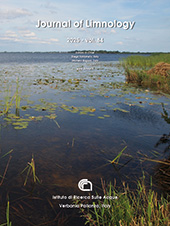Call for Papers: Special Collection on Macrophytes in Italy: knowledge update on distribution, ecology, drivers and conservation status
Italy is a biodiversity hotspot at a European and global scale, hosting a rich variety of ecosystems and habitats. This is particularly true for freshwaters, which comprise a significant proportion of the inland water ecosystems found in the South European and Mediterranean region. However, at the national scale, for many freshwater systematic groups the level of knowledge available is inadequate to implement effective conservation and recovery programs. One example above all is aquatic plants, commonly known as macrophytes. They are fundamental to the functioning of colonized ecosystems, giving rise to a multiplicity of habitats and regulating the metabolism of colonized water bodies. In Italy, despite the well known high richness of macrophytes and the multiplicity of pressures to which they are subjected, this component is very poorly explored.
To improve the available knowledge on this topic, a national project called iMAD and funded by the NBFC (Spoke 3) began in November 2024. In the frame of this initiative, we are organizing a special issue of the Journal of Limnology focussing on “updating knowledge on the distribution of macrophytes in Italy, their ecology more generally, the drivers of their spatiotemporal patterns and the conservation status of rare/threatened taxa”, with the aim of creating a strong, mutual synergy.

